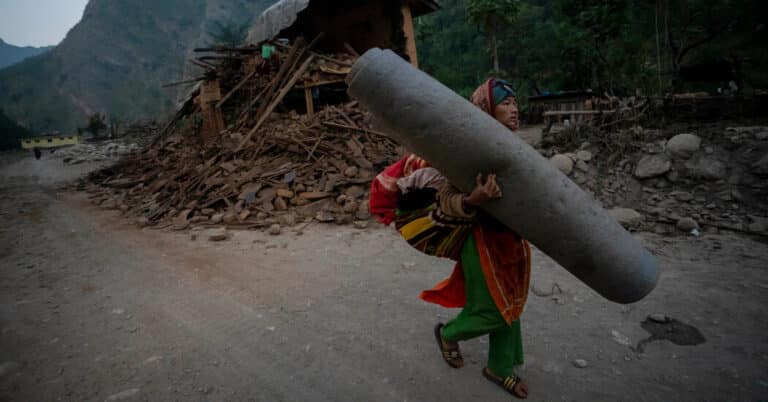Officials in Nepal were still assessing the extent of the damage on Sunday from the earthquake that struck the country’s west two nights earlier, leaving at least 150 people dead and thousands either homeless or afraid to sleep indoors.
But scientists were already renewing clear warnings that this Himalayan nation, which sits on the fault lines of two major tectonic plates, must do far more to survive such shocks and prepare for the gathering risk of a much bigger quake.
An earthquake in Nepal’s east in 2015 killed nearly 9,000 people, and the toll of Friday’s temblor, which was categorized as medium in intensity, suggested the country is a long way behind in its preparations.
“You cannot move the population; the entire country is seismic, the entire Nepal is seismic,” said Amod Mani Dixit, the director of the National Society for Earthquake Technology in Kathmandu, the capital. “But can we improve the building stock? The answer is yes we can, and we have demonstrated in many parts of the world, including in Nepal, that we can.”
Nepal is a poor nation of about 30 million people and is also suffering significantly from the effects of climate change, with melting glaciers causing flooding and affecting the availability of water for agriculture.
The earthquake on Friday, which the U.S. Geological Survey measured at magnitude 5.6 and Nepal’s National Earthquake Monitoring and Research Center at 6.4, struck remote, hilly areas in the Nepal’s west which scientists had identified as particularly vulnerable. The region had accumulated intense strain seismically since previous quakes, they said, and had not matched the safety measures put in place in the east since 2015.
On Sunday, as efforts shifted from search and rescue to relief and delivery of aid, officials estimated that at least 5,000 homes had been destroyed or damaged.
In villages across two of the worst-hit districts, Jajarkot and Rukum West, residents spent a second night under the open sky because their homes had been flattened or so badly impacted that they feared an aftershock could trap them beneath rubble.
In Bheri Municipality, in Jajarkot, most of the mud and brick homes had collapsed, said Krishna Jung Shah, a resident. Electricity poles were destroyed, and the darkness made rescues difficult. Many residents moved to the site of the local revenue office, where dozens of tents were set up.
Mr. Shah, whose own family had slept outside with sheets borrowed from a neighbor, said villagers had known they were at risk: Earlier, smaller quakes in the area had caused cracks in older buildings. But they felt they had no options.
“We have nowhere to move to,” he said.
Residents complained that aid was reaching them slowly. Many of the affected areas are far-flung or have difficult terrain, and Nepal has insisted that aid organizations coordinate all their efforts with the government in advance, seeking to avoid duplication at the risk of additional delay.
Dhruba Khadka, a spokesman for the government’s National Disaster Risk Reduction and Management Authority, acknowledged that scientists had warned that an imminent earthquake was likely in the west.
Immediately after the 2015 disaster, Nepal ordered provincial and local governments to prepare action plans and enforce building codes, he said. “They enforced the code in new buildings,” he added. “But the houses made of mud and stone were already there.”
Enforcing building regulations to improve resistance to earthquakes has remained a challenge beyond “a few metropolitan cities,” said Madhav Katwal, an engineer at the government’s Department of Urban Development and Building Construction, the authority for drafting construction codes.
“Most local governments have not enforced building codes,” he said, calling enforcement “pathetic” in the hilly areas of western Nepal.
As devastating as the 7.8-magnitude 2015 earthquake was, it may have spared Nepal the worst, scientists studying the event have said. Studies have shown that only part of the tectonic pressure that had accumulated on the fault lines was released, still leaving open the possibility of a once-in-centuries earthquake.
According to Mr. Dixit of the National Society for Earthquake Technology, a million homes in the affected area were built or retrofitted to meet the regulations introduced after the 2015 disaster.
But momentum elsewhere in the country fizzled out, Mr. Dixit said. He estimated that only about a fifth of Nepal’s roughly eight million buildings would meet earthquake resistance regulations.
“What kills is the poor building,” he said. “And we have got a prevalence of bad buildings.”


